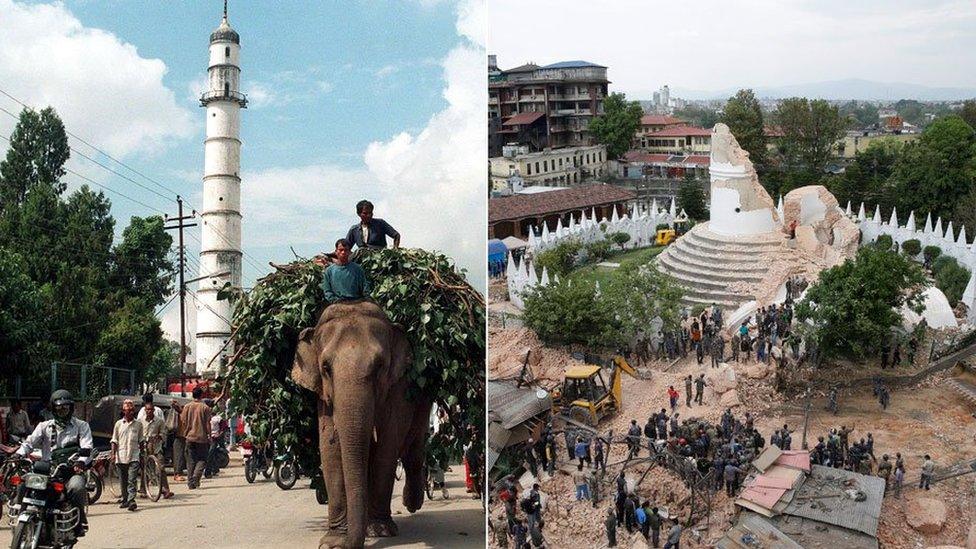Nepal earthquake: How is country faring one year on?
- Published
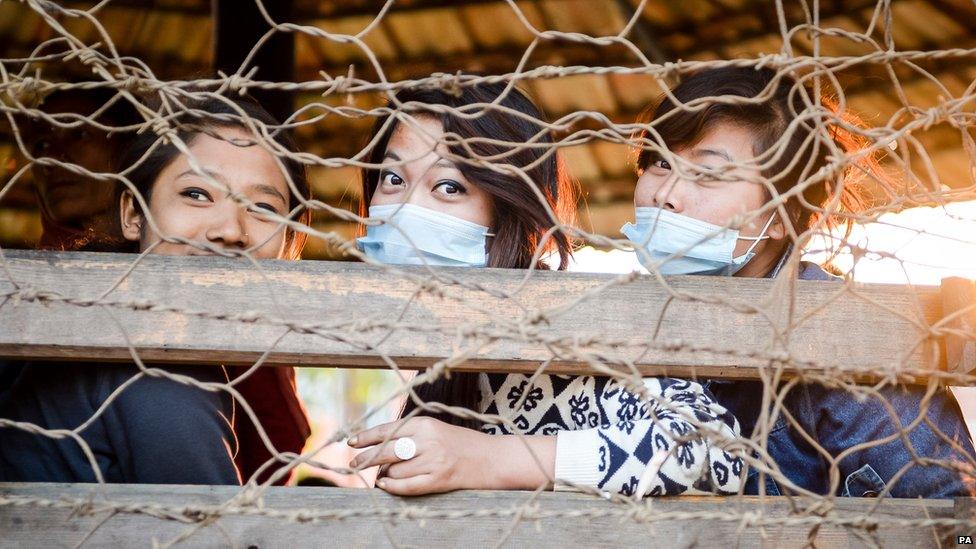
The government says 500,000 families were made homeless by the earthquake but aid agencies say the figures are higher
As Nepal marks the first anniversary of its devastating earthquake, the BBC Nepal's Surendra Phuyal assesses how the country has been coping.
What has Nepal done since the quake?
The government has provided 25,000 rupees ($250, £164) to families to buy corrugated sheets and warm clothes and paid out 40,000 rupees ($400) for the death of each family member.
Most affected families have received this money.
The Himalayan nation has also assessed the loss and damage caused by the quake, but has yet to officially kick start its much-delayed reconstruction mission.
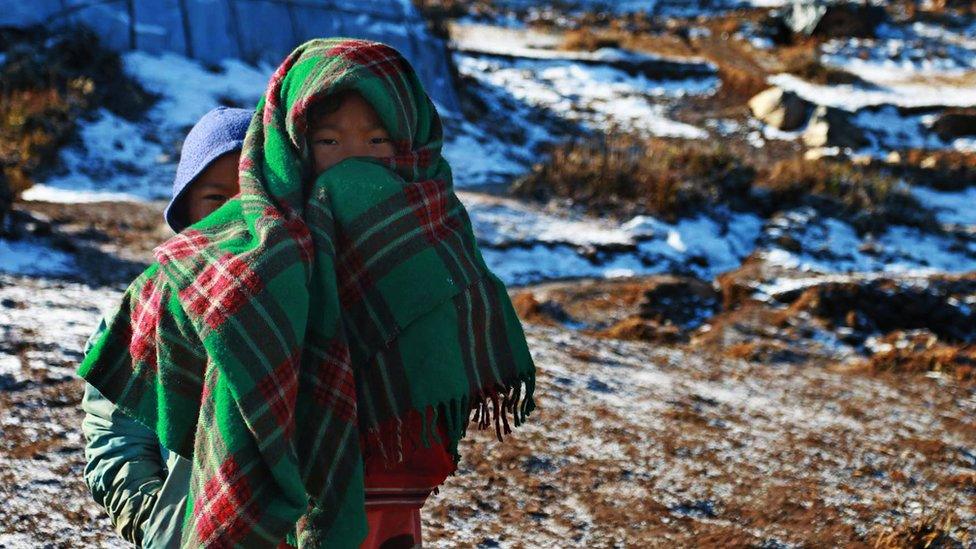
Aid groups say four million have been living in temporary shelters since the quake
The National Reconstruction Authority (NRA) was only set up in December 2015. It will officially announce the start of reconstruction campaign in the coming week.
The authority is seeking 811 billion rupees ($8bn) to implement its reconstruction programme for the next five years.
NRA spokesperson Ram Thapaliya told BBC Nepali that international donors are being asked to extend their commitment for reconstruction programmes.
"The donors have already pledged half of the amount ($4bn) and we are in the process of seeking commitment for the rest," he said.
What was the scale of the destruction?
Nearly 9,000 people died and 22,309 were injured in the two earthquakes that struck Nepal last year.
The first was on 25 April 2015, a 7.8-magnitude earthquake which caused most of the damage and loss of life.
A large number of aftershocks followed, including one that measured 7.3 on 12 May 2015.
The quakes destroyed or damaged more than 800,000 houses mainly in the western and central districts, according to the International Federation of Red Cross and Red Crescent Societies (IFRC).
The country seemed totally unprepared for the disaster.
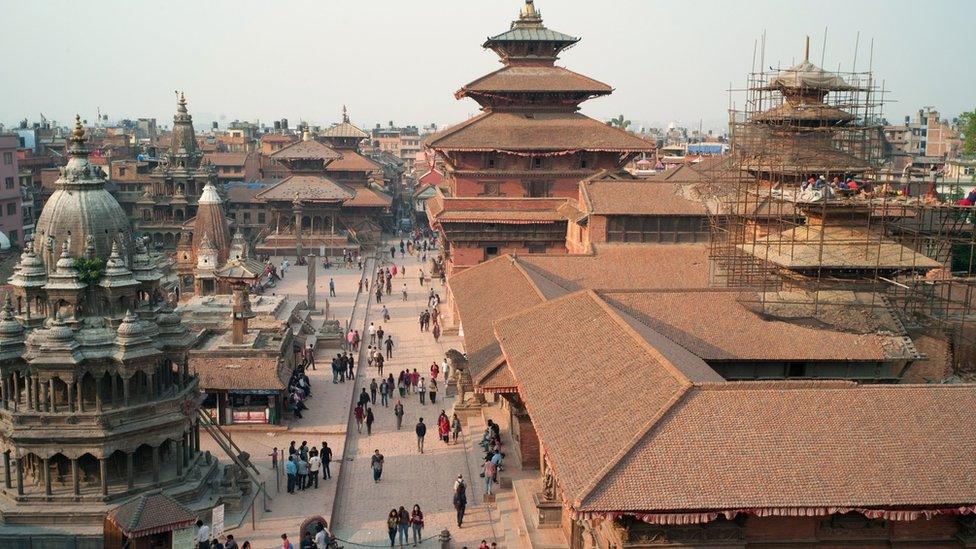
Some tourist sites were destroyed by the quakes
Government buildings, some stretches of roads and Kathmandu Valley's famous historic monuments - Unesco world heritage properties - were destroyed or damaged with many villages north of Kathmandu flattened.
In the famous trekking destination of Langtang, which lies about 100km (62 miles) north of Kathmandu, an entire settlement was buried and washed away by a massive landslide, killing more than 100 people, including international trekkers and local villagers.
Several people are still missing and have never been accounted for.
More than a dozen climbers also died in an avalanche near Mount Everest base camp.
How many people are still homeless?
Nepali government figures show that about 500,000 families were made homeless by the quakes.
But aid agencies say the true figure is much higher, with millions homeless.
The IFRC says "an estimated four million people are still living in sub-standard temporary shelters" where they're exposed to weather and health hazards.
It also estimates that more than 800,000 homes were damaged.
"Despite achievements in many areas of earthquake recovery efforts, little progress has so far been made in helping survivors to rebuild permanent homes," it said.
But Nepali officials blame a four month blockade at the Nepal-India border for hampering post-earthquake reconstruction programmes.
The unrest was due to Madhesi parties in southern Nepal protesting against a new constitution which they said disadvantaged them.
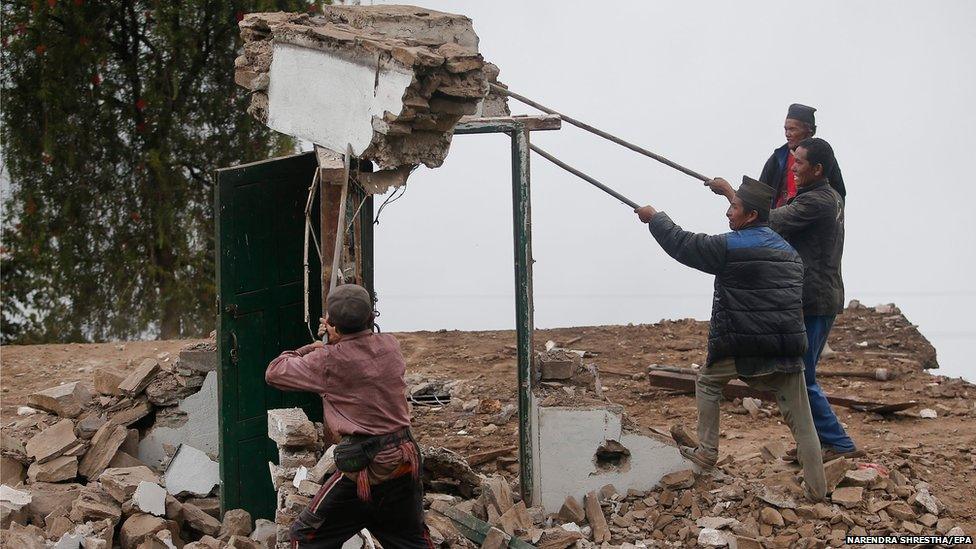
Rebuilding and reconstruction is taking a long time in Nepal
Ram Thapaliya of the National Reconstruction Authority says work is under way to help those in need and speed up the reconstruction process.
"In March, we started distributing grants, worth $500 in first stage, to around 800 families for reconstruction," he said.
"Now another 5,000 families are in the process of getting that amount."
How much aid money has been spent?
While preparing its Post Disaster Need Assessment (PDNA), the Nepali government estimated that it would need $7bn for reconstruction.
But now the reconstruction authority is raising that amount to $8.1bn, due to unspecified "cost factors".
Soon after the earthquake struck Nepal last year, a large number of international aid agencies and individuals flew into Nepal and fanned out across the affected areas from Barpak, Gorkha, the epicentre of the 25 April earthquake to Dolakha in the east, near the epicentre of the 12 May earthquake.
Their main purpose was to focus on immediate rescue and rehabilitation.
According to Himal news magazine, a popular Nepali weekly which has run an investigative cover story in its recent edition, the agencies spent an estimated $1bn.
The magazine wrote: "Where did the money go? Of the 1 billion dollars that were raised, two-thirds were spent by donor agencies, international NGOs and their local partners, and only one-third of that amount actually reached the victims."
But aid workers say the main problem is bureaucracy - and that some donors have become frustrated and given up as a result.
"We just lost a donor who wanted to give $400,000,'' Unesco's representative to Nepal, Christian Manhart, told AP news agency.
"Everything seems to be blocked because there are very lengthy government procedures.''
The Unesco office has about $1.8m earmarked for Nepal which is still waiting to be spent, AP reports.
Have tourists started coming back?
Before the earthquake, Nepal's tourism sector was doing well. In 2014, an estimated 800,000 tourists visited Nepal.
Nepal re-opened for tourism just two months after the quakes.
But the devastating earthquakes clearly scared many visitors and the number of arrivals dropped by about 30% in 2015, according to Department of Tourism figures.
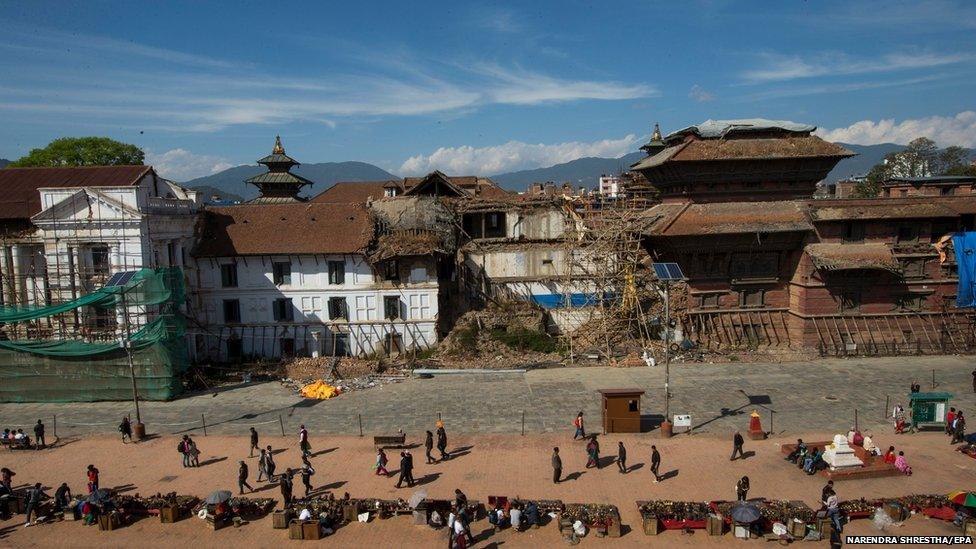
Foreign tourists have stayed away but the government is hoping to attract domestic visitors
The government is hopeful 2016 will be better.
"We are hoping for an improvement in the coming year," Sudarshan Prasad Dhakal, director general of Department of Tourism, told the BBC.
He said the government was encouraging Nepalis to visit their country's exotic natural and cultural sites this year.
"In the short term, this will help the local hoteliers, and in the longer term, it will help lay the foundation for future arrivals of international visitors."
- Published21 April 2016
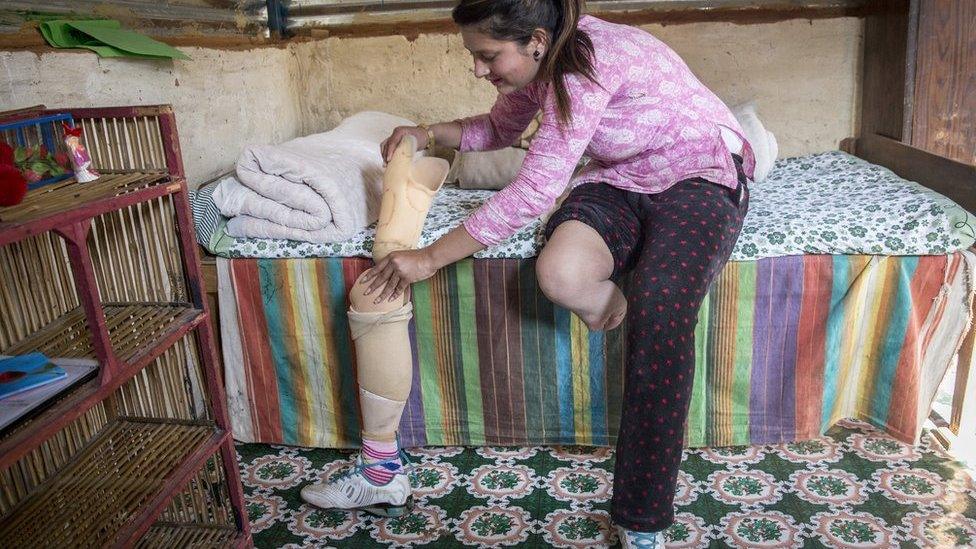
- Published11 January 2016

- Published15 May 2015
